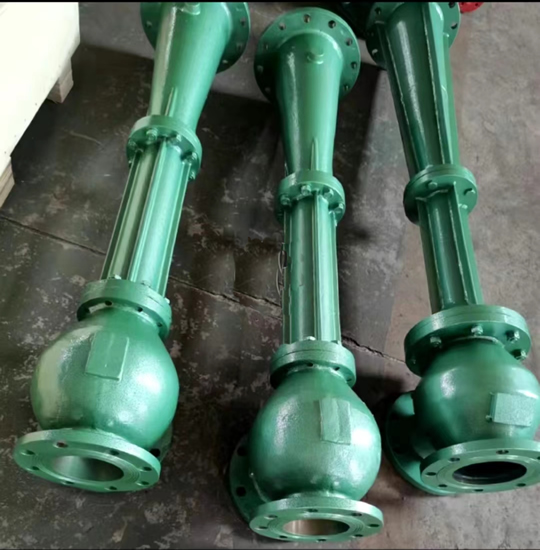Marine pumps are indispensable part of the normal operation of modern ships. They belong to the category of auxiliary machinery in the engine room. Most of them are used as auxiliary machinery, such as main engine and auxiliary seawater cooling pump, air conditioner cooling pumps, and boiler feed water pump. Of course, there are also used for independent work, such as bilge and ballast pumps, general fire pumps, etc. The properly work of these pumps affects the operation of the ship, so we must understand the normal working conditions of the marine pump.

1. Normal suction conditions
In order to ensure the normal operation of the marine pump, the suction pressure must meet the following requirements:
1). The marine pump must form a sufficiently low suction pressure at the suction port, and its value is determined by the suction conditions. It mainly depends on the suction liquid level pressure, suction height, velocity head in the suction pipeline and pipeline resistance, etc.
2). The actual suction vacuum at the suction port of the marine pump cannot be greater than the allowable suction vacuum of the pump, so as to ensure that the minimum pressure in the pump is not lower than the saturation pressure corresponding to the temperature of the liquid being delivered, otherwise, the liquid will vaporize , so that the pump does not work properly.
2. Factors affecting the suction vacuum of the pump
1). Influence of suction liquid surface pressure: When other conditions remain unchanged, the lower the suction liquid surface pressure, the lower the suction pressure, that is, the worse the suction condition. When the suction liquid surface is connected to the atmosphere, the liquid surface pressure is equal to the atmospheric pressure.
2). The effect of suction height: When other conditions remain unchanged, the greater the suction height, the lower the suction pressure. When the suction liquid surface acts on atmospheric pressure, the allowable suction height of most water pumps does not exceed 5~6m.
3). The influence of suction pipe flow velocity and pipeline resistance: When other conditions remain unchanged, the greater the suction pipe flow velocity and pipeline resistance, the lower the suction pressure. Pipeline resistance includes along-way resistance and local resistance at elbows, valves, filters, etc. In addition to reducing the length of the pipe as much as possible, reducing pipe elbows and accessories, and selecting appropriate pipe diameter and flow rate in the pipe, the filter should be washed frequently and the suction valve should be fully opened to reduce the resistance of the suction pipe. loss.
In addition, the temperature, density and inertial head of the liquid being transported will also have an impact on the suction pressure.
3. Normal discharge conditions
1). The discharge pressure that the marine pump itself can produce must be high enough, otherwise the liquid cannot be discharged. This requires that the performance of the seals of the pump should be good, the pressure resistance of the pressure-bearing parts should be good, the technical condition of the moving parts should be good, and it should be able to provide enough energy to the liquid. The discharge pressure of the pump is mainly used to raise the height of the liquid, overcome the back pressure of the discharge liquid level and overcome the resistance of the discharge pipeline.
2). The discharge pressure of the marine pump should not be too high during actual operation. For positive displacement pumps (gear pumps, plunger pumps, screw pumps, etc.), the discharge pressure will increase with the increase of pipeline load, which can theoretically reach infinite. In fact, when the discharge pressure is too high, it may cause the prime mover to overload, and even damage the sealing parts of the pump or rupture the pipeline. Therefore, the discharge pressure of the positive displacement pump must not exceed the rated discharge pressure. For vane pumps, the maximum value of the discharge pressure is limited. When the discharge pressure exceeds the rated value, although it will not cause machine damage, the flow rate and efficiency will drop sharply until they reach zero. Therefore, in order to ensure the normal discharge of the pump, it is necessary to prevent the filter or other components on the discharge pipeline from clogging during management, and pay attention to the opening degree of the discharge valve. If the discharge conditions remain the same and the discharge pressure of the pump is lower than the normal value, it usually means that the flow rate of the pump is reduced and the resistance of the pipeline is reduced.

